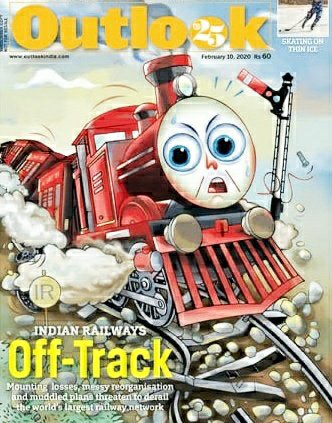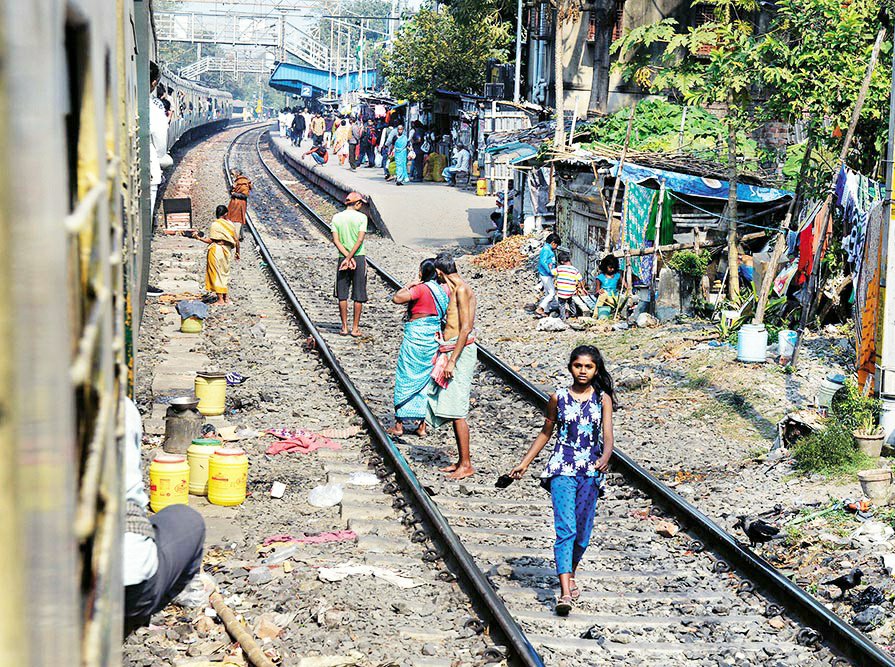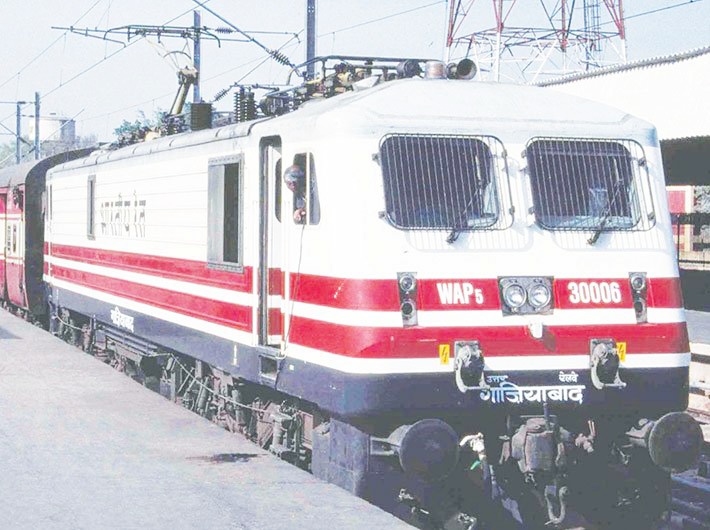Privatization Of Indian Railways: Why a tragic hero is always at Mammoth Odds
“It’s a foolish idea bound to fail” -E.Sreedharan
“The railways needs reforms, but any change for the sake of change cannot be justified” -Subodh Jain, former Member, Engineering, Railway Board
“Railways-run trains will be the ‘garib ki train’. Private ones will run for the rich” -Dinesh Trivedi, former Railway Minister
The government plans to give out 150 trains on 100 routes to private players but apart from safety concerns, the move may create a rich-poor divide

The mustard fields on the fringes of Kashi were aglow in the late January morning sun as Train no. 12581, Manduadih Superfast, rolled past the Gangetic landscape and into a newly outfitted station. The young IT professional travelling home couldn’t possibly have imagined the contrast with what any rail travel to these parts would have been like a couple of decades ago. His American Tourister bags would have glided down the escalator at New Delhi station.
The train itself was spic-and-span, and despite warnings to the contrary, only a few minutes late at its destination. Which was Manduadih, a station refurbished and expanded to decongest the main one in Varanasi: spacious, clean and balmy in the morning breeze. Everything quite in tune with the spiced sweet milk tea hawkers brought in fresh kulhads en route.
But then, this was Varanasi. The cynosure of India’s pilgrim traffic. Not just that, the small sprinkling of White tourists on that train, also the few Sarnath-bound befuddled-looking East Asian pilgrims, attested to a more global appeal. And of course, it’s the home constituency of PM Narendra Modi. Natural, then, that it received the kind of attention only a showpiece can hope for.
The story of Indian Railways, elsewhere, still resembles that of a train wreck. A creaking infrastructure never quite able to support the huge Indian demographic it services. Finances that are always like a dog chasing its own tail. Overrun stations. Habitual delays. A mammoth organization, at best struggling like a tragic hero, against even more mammoth odds. At worst, a neglected orphan.
When finance minister Nirmala Sitharaman presents Budget 2020-21 on February 1, that neglect will be screamingly obvious. The allocation to Indian Railways will be just a blip that will probably go unnoticed in the larger picture. It’s been like that ever since the railway budget was shoehorned into the general budget in 2017.
That railway officials, spared the scrutiny a separate budget brought, are actually thankful for that neglect speaks of an endemic air of resignation. Yes, there have been big headlines. The biggest, one that has everyone pulling the chain, is privatization.
There are always those who see that as the light at the end of the tunnel. And those who say that light belongs to an onrushing train! Along with the proposed Air India privatisation, expect this to hog debating space in the near future. There is a plan to give out 150 trains on 100 routes to private players, and bidding is expected to start soon.

Short Supply: The creaking infrastructure of Indian Railways struggles to be able to support the huge Indian demographic it services.
Former railway minister Dinesh Trivedi boils the debate down to its essence: privatization will create further class divisions. The railways-run trains, he says, will become “trains for the poor” and the private ones will run only for the rich and the profit. “They will have better seats, cleanliness, facilities and, of course, a higher fare. It will be like the difference between a government hospital and a private one. The government trains will become the ‘garib ki train’,” Trivedi adds.
‘Metro Man’ E. Sreedharan, one of India’s most respected railwaymen, does not approve of privatization either. “It’s a foolish idea bound to fail,” he tells. “Apart from IRCTC (Indian Railway Catering and Tourism Corporation), I don’t see anyone coming forward to run trains. There are too many uncertainties. Two types of fares and two types of trains will create confusion. Private players will find it difficult to work with the railways, and abandon it midway,” he adds. The ‘reform’ enthusiasts will doubtless offer their reasons too, and words like efficiency will buzz around. The complicated history of Britain’s own rail privatization—and its disputed success—will stand as a cautionary tale for a railway they had left behind.
Another big move making headlines is the merger of eight different services into one cadre. Questions are being raised about railway safety as the merger threatens to dilute the ‘specialisation’ required in train operations. Behind the headlines lurks a story of dwindling finances, unfinished projects, and most worryingly, decreased demand.
The railways has consistently lost passenger traffic to budget airlines in the long-distance segment. (For the same Rs 4,000-odd, would you prefer a 34-hour Rajdhani ride to Bangalore or a 3-hour airdash?) For shorter hauls, there’s a whole armada of Volvo buses now.
And with incrementally steeper cargo fares — the milch cow subsidising passenger fares — the railways has lost out to the road sector. What with projects like the Dedicated Freight Corridor (DFC) still trailing as way behind schedule as the station redevelopment scheme.
Even the Modi government’s big-ticket bullet train project—the Mumbai – Ahmedabad High Speed Rail—is believed to have been put on the backburner as it faces diverse challenges, the biggest being of land acquisition. Many deadlines for commencing work having already whizzed past, sources admit to a ballooning of projected costs—estimated at Rs 1.6 lakh crore now, as compared to the Rs 1.1 lakh crore fixed by the original feasibility study.
The proposed completion date of December 2023 seems a stiff ask too. Sushma Gaur, Spokesperson of the National High Speed Rail Corporation Ltd (NHSRCL), is sanguine though. The bullet train is on track, he tells, and “the issue of cost increase, if any, can only be established after finalisation of tenders.”
Many question the rationale of having a bullet train at all, with high fares and doubtful ridership. But rationale is often hard to spot in other decisions as well, equally costly ones. Railway officials and experts believe the government, in its eagerness to push ‘reforms’, has ended up putting more pressure on railway finances.
A case in point is persisting with the manufacture of diesel locomotives while electrification is a stated goal. Minister Piyush Goyal announced on January 27 that the entire railway network will run on electricity by 2024, and that diesel locomotives are already being shunted out of service. Speaking at the India-Brazil Business Forum, he said it will be the first railway in the world of this size and scale to be entirely run on electricity.
However, he did not mention how the railways planned to utilise the 100 diesel locomotives that have already been manufactured at the Marhowrah factory in Bihar by US giant General Electric (GE). And what they intended to do with the 900 more GE is under contract to make—100 every year for the next nine years!—with railways obliged to purchase them.
Along with Alstom that won the contract for the Electric Locomotive factory in Madhepura, the two factories in Bihar—worth Rs 3,347 crore—were touted as the first FDI in the railway sector in 2015. The Madhepura factory, incidentally, has not managed to put up even the prototype for approval.
Electrification is definitely a environment-friendly move. Railway ministry sources say the scenario should have been anticipated since the organisation was already curtailing production of diesel locos in its own units. In 2018, the CAG had also questioned the wisdom in persisting with the Marhowrah factory “at a liability of Rs 17,126 crore”.

Transit Zone: Just another day at Churchgate railway station in Mumbai.
The railways is likely to end the fiscal year with a shortfall of over Rs 25,000 crore. According to officials, the Operating Ratio (OR) hovers around 120. As the money spent by railways to earn every Rs 100, it’s a good indicator of financial health. An OR of over 100 means the organization is in the red. Earnings from both passenger fare and cargo are down, way behind budget projections—during April-Nov 2019, it earned Rs 1,14,197.94 crore against a target of Rs 1,36,026.22 crore. Expenditure, meanwhile, exceeded the target by Rs 4,400 crore. Chairman railway board (CRB) V.K.Yadav admits that the OR is under severe stress. “We hope to improve it by the end of the fiscal year,” he said.
All trains will run on electricity by 2024. But 100 GE diesel locos will be bought every year for nine years!
A budgetary allocation of Rs 70,000 crore is what the Railways is looking at—that will just about keep the engine running, so to speak, covering operating costs, salaries et al. It has also sought, optimistically, an additional Rs 50,000 crore to help clear its pension liability. “Our biggest expenditure is on pensions. If that is removed, our OR will be around 72-75 per cent, which is quite good,” adds the CRB.
That apart, we are likely to see the highest – ever outlay of Rs 1.70 lakh crore-plus for capital expenditure (up from Rs 1.60 lakh crore last year). But that perhaps sounds rosier than it really is. Why? What could be wrong with putting a few lakh crores into funding things like track renewal, electrification, and ongoing projects including the DFC, High Speed Rail and the much-delayed Udhampur – Srinagar – Baramulla line?
One reason: it’s always too little, too late — and still too much. Take the last – mentioned project. One of the most challenging infrastructure projects, it has already missed several deadlines since 1997, and now has a new deadline of December 2021. The escalated cost is now over Rs 20,000 crore. With scanty resources, it’s a race impossible to win.
Ministry officials reckon modernising railway infrastructure will need an investment of Rs 50 lakh crore till 2030! If priorities are even slightly askew—and senior officials believe they are—that sum will be hard to come by. The govt’s focus, they say, is more on the ‘frills’ than core operations, and that’s taking a toll.
A senior official claims railways has spent more money on train and station cleaning contracts than on track renewals. (Think back to the showpiece station at Kashi.) But isn’t cleanliness a primary good? Well, trouble is, with railways letting go of a large chunk of Class IV employees, cleaning has been outsourced at a huge cost.
The railways have spent “nearly Rs 2,000 crore only on getting stations cleaned,” says the official. “The Delhi division, for example had a contract of Rs 300 crore in 2019-20 and a smaller one like Waltair (the colonial-era name for Vizag) had a Rs 34-crore contract.” With that thought, think ahead of more privatized services—and where the money will finally come from?
That reflects in a change of ethos
Rakesh Chopra, former member (engineering), railway board, says the conversations around railway functioning have changed. “The key performance indicators appear to have changed. Nobody is talking about basics like freight loading or NTKM (net tonne kilometre) or even the OR. It’s more about station cleanliness, ATMs at stations and WiFi. This is not to say these are not important, but how will they help if the system is not robust?” he asks.

Scene City: This train runs through Calcutta.
About the plan to give out 100 routes to private operators, Chopra says it’s a good step in principle, but cautions against rushing into it. “A regulator to fix tariffs needs to be appointed first. Suresh Prabhu proposed a Rail Development Authority, but it never materialised. Also, the DFC needs to come up before private operators come in. The network needs to be decongested first,” he explains.
The existing network is under too much pressure, with bottlenecks galore. “Half the network of 68,000 km carries 96 per cent of rail traffic.. both freight and passenger. There isn’t much time for track maintenance. When we do take a block for maintenance, trains get late! But then, our safety record improves. The mantra is, let the trains be late but no compromise on passenger safety,” says a senior official from the traffic department.
Delays will be a no-no with private trains. That’s why officials feel it is advisable to wait till the DFC is completed—say, by December 2021—rather than have the anomalous situation of public trains having to give right of way to private ones!
As for the merger idea, Sreedharan feels “it is a good thing as it will get rid of departmentalism”. However, he advocates care, so as to ensure technical departments don’t lose their edge. “Railway technical officers are the best in India—be it signalling, telecom or engineering. The excellence has to be maintained,” he advises.
Dinesh Trivedi, in fact, fears precisely such a drop in quality. “It will affect safety. Like a hospital needs specialists, railways too needs technical experts. Asking a management person to do operations is asking for trouble,” he says.
Subodh Jain, another former member (engineering), uses harsher words. The proposed merger and restructuring of the railway board, for him, represent the “most violent reform in the history of railways”. He says, “it’s ill-timed and unclear on objectives, and the ‘insecurity’ among the 9,000 officers has played havoc with their morale. Yes, the railways needs reforms, but any change for the sake of change cannot be justified ,” he cautions.


